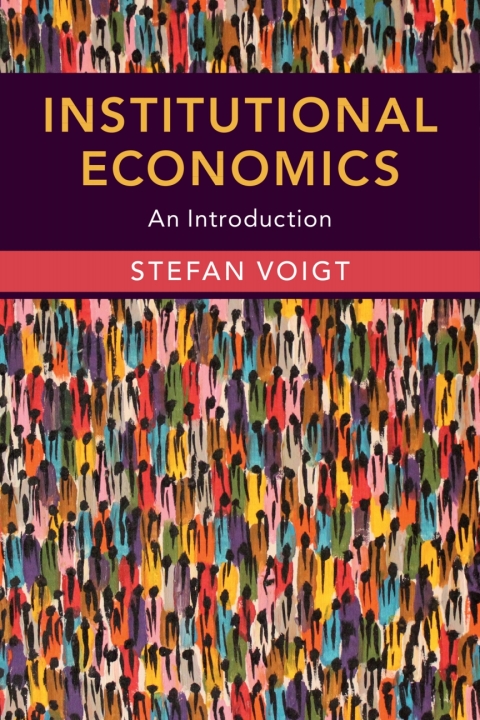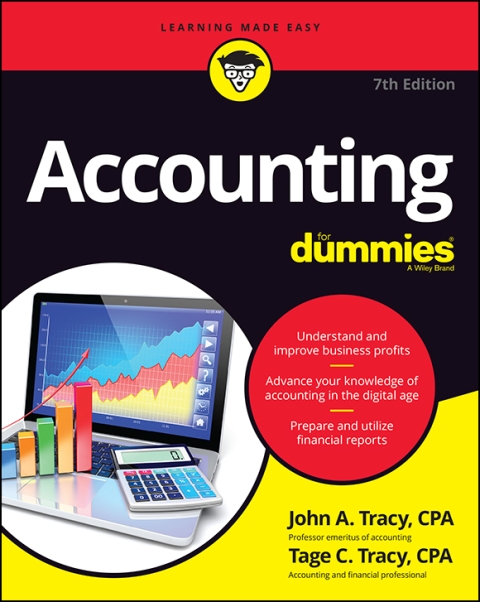Description
Efnisyfirlit
- Half-title
- Title page
- Copyright information
- Brief Contents
- Detailed Contents
- Figures
- Tables
- Preface
- Introduction
- 1 The Basics
- 1.1 The Standard Behavioral Model of Economics – and a Few Modifications Made by New Institutional E
- 1.1.1 From Perfect to Bounded Rationality
- 1.1.2 Transaction Costs
- 1.2 Institutions: Functions, Types, and Interrelationships
- 1.2.1 Definitions of Institutions
- 1.2.1.1 Characteristics of Rules
- 1.2.1.2 Types of Enforcement
- 1.2.2 Interactions between Internal and External Institutions
- 1.3 Research Questions
- 1.4 The Toolkit of Institutional Economists
- 1.4.1 Game Theory: A Tool for Analyzing Strategic Interaction Situations
- 1.4.1.1 A Coordination Game
- 1.4.1.2 A Mixed-Motive Game: The Prisoner’s Dilemma
- 1.4.2 Comparative Institutional Analysis
- 1.4.3 Experiments in the Laboratory or the Field
- 1.4.4 Case Studies Including Economic History
- 1.4.5 Econometric Tests
- 1.5 NIE’s Common Ground with and Differences from Other Research Programs
- 1.6 Open Questions
- Questions
- Further Reading
- 2 Simple Transactions
- 2.1 The Relevance of External Institutions for Simple Transactions
- 2.1.1 The Coase Theorem
- 2.2 The Relevance of Internal Institutions for Simple Transactions
- 2.2.1 Example 1: Norms of Cooperation and the Ultimatum Game
- 2.2.2 Example 2: Fairness Notions and Price Formation
- 2.3 The Relevance of Interplay between External and Internal Institutions for Simple Transactions
- 2.3.1 Conflicting External and Internal Institutions
- 2.3.2 Complementary External and Internal Institutions
- 2.3.3 Substitutive Relationship between External and Internal Institutions
- 2.3.4 Empirical Results on the Relationship between External and Internal Institutions
- 2.4 On the Estimation of Transaction Costs
- 2.4.1 Estimations of the Size of the Informal Sector
- 2.5 Open Questions
- Questions
- Further Reading
- 3 Repeated and Long-Term Transactions: On the Choice of Governance Structures with Given Institution
- 3.1 Introductory Remarks
- 3.2 From a Black Box to the Firm as a Team
- 3.3 Problems Associated with Asymmetric Information: The Principal-Agent Theory
- 3.4 Transaction Cost Economics
- 3.5 The Firm as a Collection of Assets
- 3.6 The Relevance of Internal Institutions
- 3.6.1 Example 1: Corporate Culture: On the Coordination of Interaction Situations within Firms
- 3.6.2 Example 2: On the Relevance of Reciprocity in Labor Relations
- 3.7 Open Questions
- Questions
- Further Reading
- 4 Institutions and Collective Action
- 4.1 Introductory Remarks
- 4.2 Explaining Politicians’ Behavior Under Given Institutions
- 4.2.1 Preliminary Remarks
- 4.2.2 Example 1: Rent Seeking
- 4.2.3 Example 2: Political Business Cycles
- 4.2.4 The Dilemma of the Strong State
- 4.3 Explaining Collective Action Using Internal Institutions
- 4.3.1 From Non-Repeated to Repeated Games
- 4.3.2 Evidence from the Laboratory
- 4.4 The Interplay between External and Internal Institutions and its Relevance for Collective Action
- 4.5 Open Questions
- Questions
- Further Reading
- 5 The Relevance of Institutions for Growth and Development
- 5.1 Introductory Remarks
- 5.2 Determinants of Economic Growth: Institutions, Geography, Culture?
- 5.2.1 Institutions
- 5.2.2 Geography
- 5.2.3 Culture
- 5.3 The Relevance of External Institutions for Economic Growth and Development
- 5.3.1 How to Measure External Institutions
- 5.3.2 Early Attempts to Measure External Institutions
- 5.3.3 One Measurement Attempt in Detail
- 5.3.3.1 Preliminary Remarks
- 5.3.3.2 The Economic Freedom Index
- Size of Government
- Legal System and Property Rights
- Sound Money
- Freedom to Trade Internationally
- Extent of Regulation in Banking, Labor, and Business
- Method of Evaluation
- 5.3.3.3 Criticisms of the Economic Freedom Index
- 5.3.4 Results of Empirical Studies
- 5.3.5 Institutions or Policies?
- 5.4 The Relevance of Internal Institutions for Economic Growth and Development
- 5.5 On the Interplay between External and Internal Institutions and its Relevance for Economic Growt
- 5.6 Open Questions
- Questions
- Further Reading
- Appendix A Ten-Minute Primer in Econometrics
- 6 Explaining Differences in External Institutions across Societies
- 6.1 Introductory Remarks
- 6.2 Origins and Change of Property Rights: A Traditional View
- 6.3 Origins of and Change in Property Rights and the State: Accounting for Political Economy Factors
- 6.4 Explaining Differences in Institutions
- 6.4.1 Preliminary Remarks
- 6.4.2 Explaining External Institutions Based on Geography
- 6.4.3 Explaining External Institutions Based on Culture or History
- 6.4.4 Explaining External Institutions Based on Social Conflict View
- 6.5 Institutional Change via Institutional Competition?
- 6.6 Elements of a General Theory
- 6.6.1 Preliminary Remarks
- 6.6.2 Satisficing Behavior
- 6.6.3 Collective Action Problems
- 6.6.4 Path Dependency of Institutional Change
- 6.6.5 Political Transaction Costs
- 6.6.6 The Relative Power of the Relevant Actors
- 6.6.7 The Relevance of Internal Institutions
- 6.6.8 A Short Summary
- 6.7 Open Questions
- Questions
- Further Reading
- 7 Explaining Change in Internal Institutions
- 7.1 Introductory Remarks
- 7.2 The Problem in Economic Terms
- 7.3 Hypotheses on the Origins of Norms
- 7.3.1 Evolutionary Approaches
- 7.3.2 Repetition or Reputation as Explanatory Factor?
- 7.3.3 An Attempted Synthesis
- 7.3.3.1 Regular Behavior
- 7.3.3.2 Interdependent Utility Functions
- 7.3.3.3 Norms of Cooperation
- 7.3.3.4 Concerning the Sanctioning Component
- 7.3.3.5 Outlook
- 7.4 Potential Triggers for Change in Internal Institutions
- 7.4.1 Introductory Remarks
- 7.4.2 Geography Again
- 7.4.3 External Institutions
- 7.5 Open Questions
- Questions
- Further Reading
- 8 On the Need for Normative Theory
- 8.1 Introductory Remarks
- 8.2 What is Normative Theory and Why Should We Study It?
- 8.3 Two Competing Normative Concepts
- 8.3.1 The Welfare Theoretical Approach
- 8.3.2 Hypothetical Consent: A Heuristic to Derive Normative Statements
- 8.3.3 Some Critical Comments on the Unanimity Test
- 8.4 Requirements for a Normative Theory from the Perspective of Institutional Economics
- 8.4.1 The Approach of Williamson
- 8.4.2 The Approach of Hayek
- 8.4.3 Consequences of the Two Approaches
- 8.5 Open Questions
- Questions
- Further Reading
- 9 Consequences for Economic Policy
- 9.1 Introductory Remarks
- 9.2 Policy Recommendations: The Traditional – Naïve – Approach
- 9.3 Activation of Internal Institutions through Government Action?
- 9.3.1 A Specific Example: Voluntary Commitment Declarations
- 9.4 Policy Reforms in Practice: Case Study of New Zealand
- 9.4.1 The Initial Situation in New Zealand
- 9.4.2 Overview of the Most Important Reforms
- 9.4.3 Explaining the Reforms
- 9.4.3.1 Underlying Theories
- 9.4.3.2 Persons Involved
- 9.4.3.3 Behavior-Channeling Institutions, Relevant Organizations
- 9.4.3.4 Favorable Circumstances
- 9.5 Open Questions
- Questions
- Further Reading
- 10 Outlook
- 10.1 Introductory Remarks
- 10.2 Institutions and Mental Models
- 10.3 Institutions and Ideas
- 10.4 Institutions and Individuals
- 10.5 Institutions beyond the Nation-State
- 10.6 Institutions and Identification
- 10.7 Where to Turn to Start Your Own Research?
- Further Reading
- References
- Index






